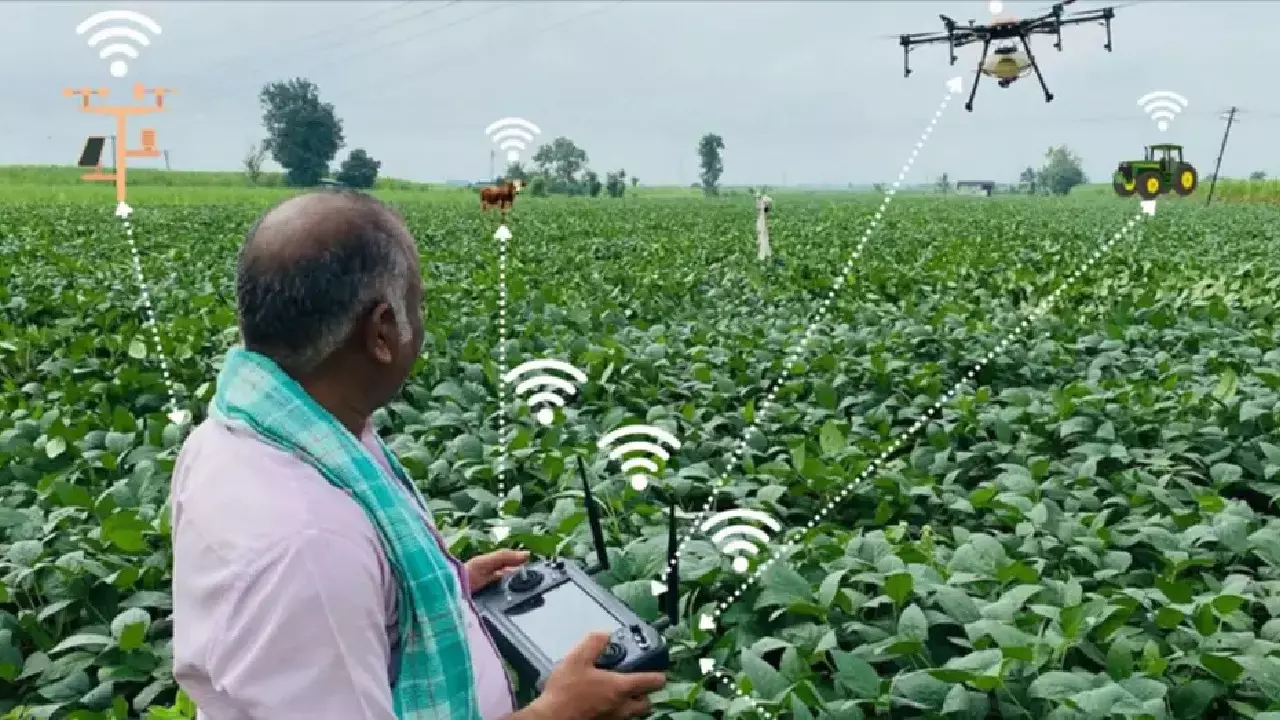TG Agriculture: Revolutionizing Rice Planting with Drones for Cost-Effective Farming
Discover how drone technology is transforming rice planting in agriculture, helping farmers reduce costs and labor shortages. Learn about recent experiments by Acharya Jayashankar Agricultural University and the benefits of using drones for efficient rice sowing.
TG Agriculture: Revolutionizing Rice Planting with Drones for Cost-Effective Farming

Agriculture today poses significant challenges, particularly as investment costs continue to rise, putting immense pressure on small and marginal farmers. In response, research efforts are underway to explore methods that can lower cultivation expenses. One promising innovation is the use of drones for rice planting. Here’s an overview of this initiative.
Drones in Rice Planting
The process of planting paddy has increasingly become labor-intensive and costly for farmers due to a shortage of available workers. To address this issue, Acharya Jayashankar Agricultural University has pioneered the use of drones for direct seeding of rice. Researchers at the university have conducted recent field experiments to assess this method.
Field Experiment Details
In Raghunathapalli, Janagama district, rice seeds were sown directly into farmers' fields using drones under the guidance of Professor Ramgopal Verma, Nodal Officer of the University's Drone Department, and Professor Ummareddy, Joint Director at the Warangal Regional Research Center. The research highlights a critical shortage of laborers in traditional rice cultivation. By utilizing drones, farmers can potentially reduce planting costs by ₹6,000 to ₹8,000 per acre.
Efficiency of Drone Planting
Currently, 25 kg of seeds are required per acre when using irrigation methods. However, with the drone technique, only 8 kg of high-yield varieties and 6 kg of medium varieties are needed per acre when planted in five rows spaced 30 cm apart. Remarkably, the planting process can be completed in just 10 to 12 minutes per acre, with the capacity to establish up to 59 plants per square meter. While this method is currently limited to a small area, researchers are optimistic about its expansion across the state if successful results are achieved.
Potential Benefits for Farmers
Should this drone planting method prove effective, it would significantly alleviate labor shortages and expedite the planting process, allowing completion of work on an acre in just 15 minutes. This efficiency not only saves time but also reduces seed requirements and overall costs, benefiting farmers financially. Despite some skepticism among farmers regarding the method's success, researchers remain confident in its potential.
Growing Use of Drones in Agriculture
The application of drones in agriculture is on the rise. While pesticide spraying was traditionally done using pumps, it is now increasingly performed with drones, making the process faster and more cost-effective. In several villages across Telangana, drone usage for pesticide application has already been implemented. If the drone sowing method yields positive outcomes, it could further ease the burdens on farmers and contribute to lower operational costs.
Through this innovative approach, the future of rice planting looks promising, offering hope for enhanced efficiency and reduced expenses for farmers in the region.

